The PowerWalker VI 1500 CSW UPS Review: Trying For True Sinewave on a Budget
by E. Fylladitakis on April 13, 2022 8:00 AM EST- Posted in
- Cases/Cooling/PSUs
- UPS
- PowerWalker
- BlueWalker
- 1500VA
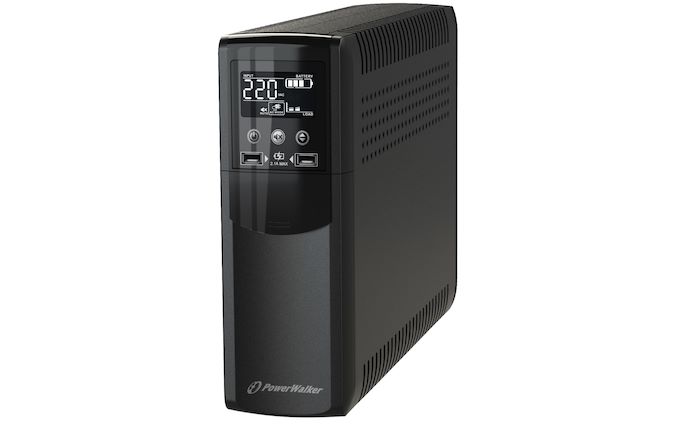
Editor's Note: Today we're kicking off a new review category for AnandTech: Uninterruptible Power Supplies. These devices are becoming increasingly common as desktop users are looking for laptop-like reliability. All the while, it's also an area that we feel is lacking in good, EE-enlightened systematic reviews. So our multi-talented power guru, E. Fylladitakis, is applying his skills to UPSes. As this is a new area for us, please let us know what you think in the comments below!
While Uninterruptible Power Supplies are hardly a new thing in the PC space, the tried-and-true battery backups for desktop PCs have been undergoing a resurgence in popularity in recent years. Improvements in power delivery technology such as GaNs have been reducing costs and improving reliability, and meanwhile lithium-ion batteries, with their much greater energy density/lower volume, are starting to make inroads on the UPS market as well. All the while, with laptops outselling desktops in the consumer PC market, a PC that doesn't shut itself down during a power outage is becoming the norm, rather than the exception. So what better time is there to take a look at UPSes?
To kick off our inaugural UPS review, we're starting with a 1500VA unit from BlueWalker. BlueWalker is a company that originates from Germany and specializes on the design and marketing of power-related equipment. The company was founded in 2004, making it one of the oldest household UPS/AVR manufacturers that still exist to this date.
BlueWalker is marketing their retail products under the PowerWalker brand name and has a very wide portfolio of both hardware and software products available. For today’s review, we are taking a look at the PowerWalker VI 1500 CSW, a 1500VA/900W UPS that boasts a true sinewave output.
| PowerWalker VI 1500 CSW | |||
| Power Capacity | 1500VA/900W | ||
| Output Voltage | 230 VAC | ||
| Input Voltage | 170-280 VAC | ||
| Type | Line Interactive | ||
| True Sinewave | Yes (ish) | ||
| Battery | Lead-Acid, 2x 12V/9Ah | ||
| Full Load Backup Time | 3.5min | ||
| Half Load Backup Time | 10min | ||
| Battery-Backed Sockets | 2 (Type F) | ||
| Surge Protected Sockets | 2 (Type F) | ||
| USB-A Outputs | 2 (2.1A) | ||
| Ethernet Surge Protection | Yes | ||
| LCD Display | Yes | ||
| Dimensions | 99 x 280 x 410 mm | ||
| Weight | 13.1 kg | ||
Given that BlueWalker is a German company, there should be little surprise that the PowerWalker VI is geared towards the European market. The UPS only outputs at a nominal 230V, and similarly, is only designed to accept voltages around that range (sorry, Americans!). Past that, this specific version comes with 2 battery-backed Type F sockets, as well as another two sockets with just surge protection. With 216 Wh of lead-acid battery capacity, it's rated to run a full load for a few minutes, stretching into the double-digits at a half load or less.
Of particular interest with this UPS is the price: true sinewave units have historically carried a significant price premium, but BlueWalker isn't charging nearly the same premium as true sinewave UPSes from other major manufacturers, making the PowerWalker VI 1500 CSW a much cheaper UPS – and at around €180, one that's popular on the market as a result. But can it live up to the same high power delivery expectations without the same wallet-busting price? Let's find out.
The PowerWalker VI 1500 CSW UPS
We received the PowerWalker VI 1500 CSW in a relatively simple cardboard box, with the heavy unit well-protected by thick packaging foam pieces. Inside the box, we found a CD with the compatible monitoring software, thorough manuals in several languages, and a USB cable.
The PowerWalker VI 1500 CSW is a tower-style UPS with an LCD screen at the front. Measuring only 410 mm deep, 100 mm wide, and 280 mm tall (16.2 in × 4 in × 11 in), it is very compact for a unit with that high of an output. There are also two USB charging ports at the front, right under the LCD screen.
The LCD screen, once turned on, will show the basic electrical figures of the unit, such as the voltage, the load, and the remaining battery time. It stays off most of the time and the user needs to press the power button momentarily in order to turn it on.
At the rear side of the tower, we find four power sockets. We are testing the version with the four Schuko (Type F) sockets, but BlueWalker also offers this unit with UK and FR sockets, plus a version with eight IEC socket.
Note that only two sockets offer battery backup, as the other two are for surge protection only. In fact, having just two sockets connected to the unit’s battery backup output is an atypically low number of powered sockets for a 1500VA UPS, as we usually see more.
Along with power protection, there is also a non-destructive circuit breaker and an Ethernet surge protection path (input-output jacks) available with the PowerWalker. Finally, there is a fan that will only turn on when the unit is running on batteries, charging its batteries, or in auto voltage regulation (AVR) mode. The AVR mode essentially has the unit running on grid power but forces the AVR circuit to operate, which may be useful in some situations where the power grid is energized, but very unreliable.
More than half of the front fascia is a door that must be removed in order to access the battery compartment. It is held in place by two small screws at the bottom side of the unit. Once removed, a very large connector can be seen that connects the batteries to the main unit. This needs to be unplugged in order to remove the batteries. If the batteries need to be replaced, the wiring must be unplugged and transferred to the new batteries. We found two Leoch 12V 9Ah batteries in the unit, connected in series (24V 9Ah output). Leoch is a Chinese manufacturer of batteries that is amongst the largest on the planet and whose products are considered to be of fairly good quality.
Cracking open the unit’s body, we can see the unit’s large transformer and circuitry. The transformer actually is not very large for the 1500 VA unit and the amount of cooling it receives from the fan is fairly low. This will not be a problem for the stock unit, where the batteries will likely last just a few minutes, as there will not be enough time for the transformer to overheat. Modifying the unit’s batteries to increase its autonomy in any way without greatly upgrading its cooling capabilities would be, however, nothing short of suicidal.
The power circuitry left us with mixed feelings. The relays are supplied by Golden Relays, a reputable manufacturer, yet the capacitors are supplied by Aishi and Jamicon, suppliers that are considered to be mediocre. Eight IRF3205 MOSFETs generate the output when the unit switches to its batteries, MOSFETs that are proven to be reliable but, having been released well over two decades ago, are nowadays very cheap and their performance is relatively poor compared to more modern MOSFETs. The workmanship is very good but the circuitry layout is fairly outdated.


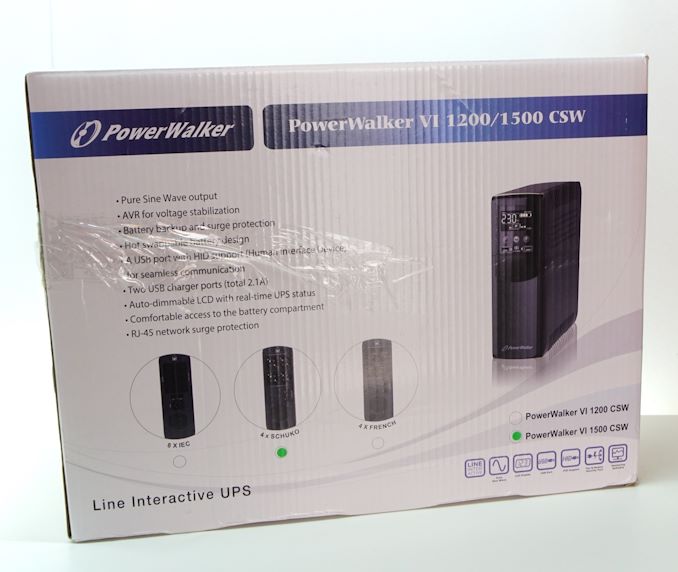

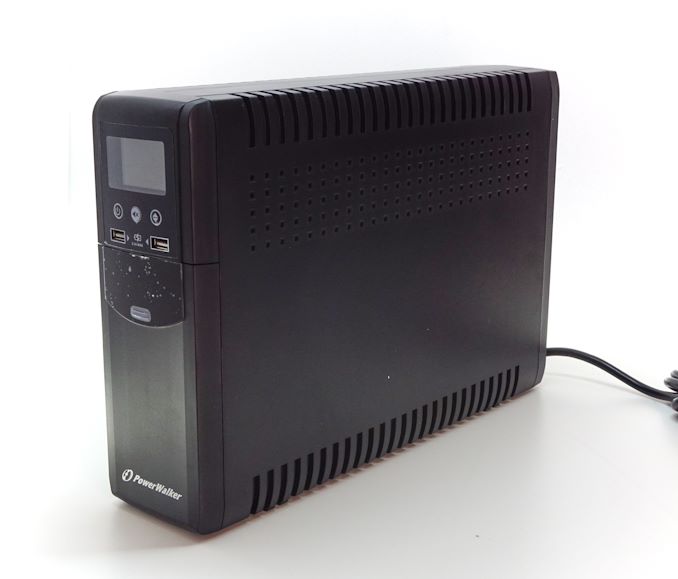
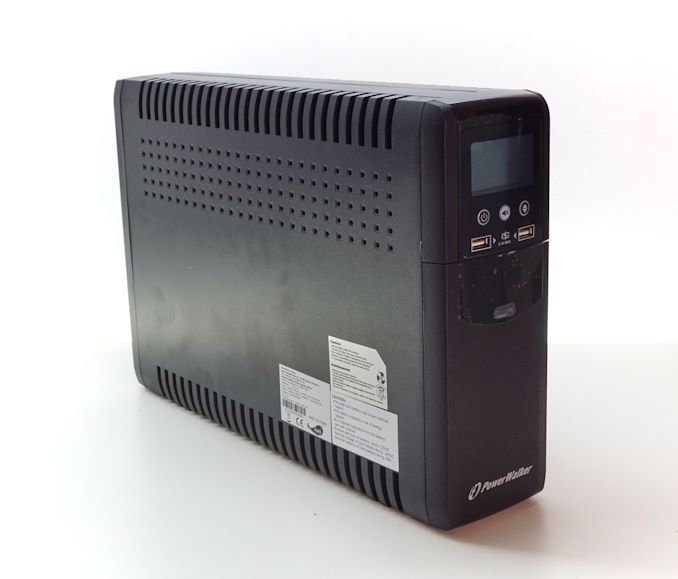
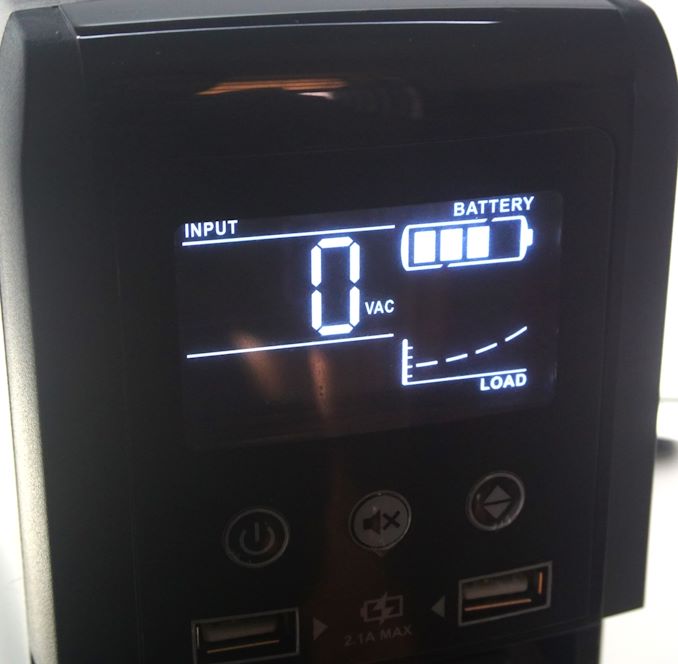

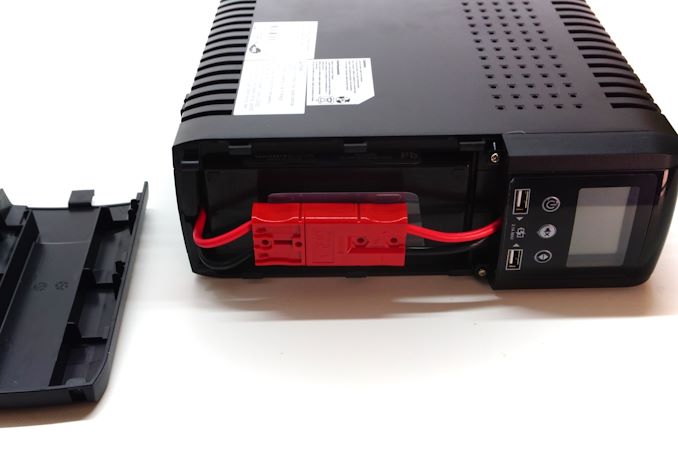
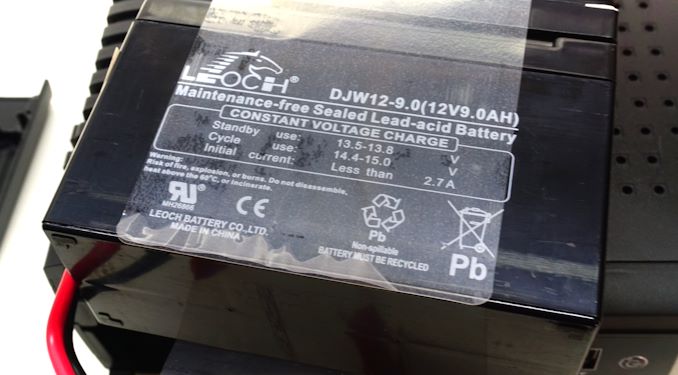
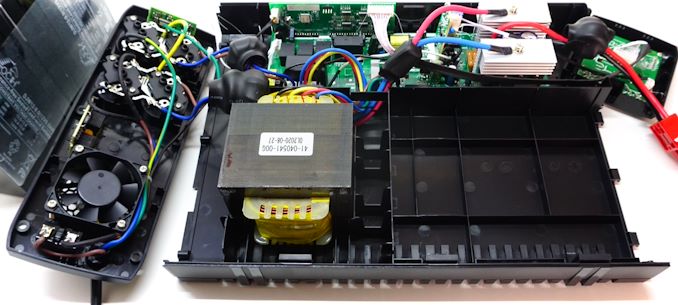

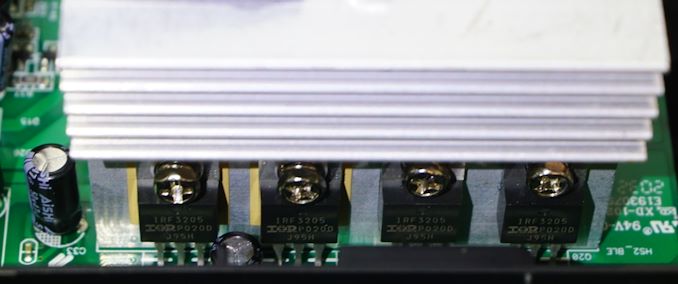

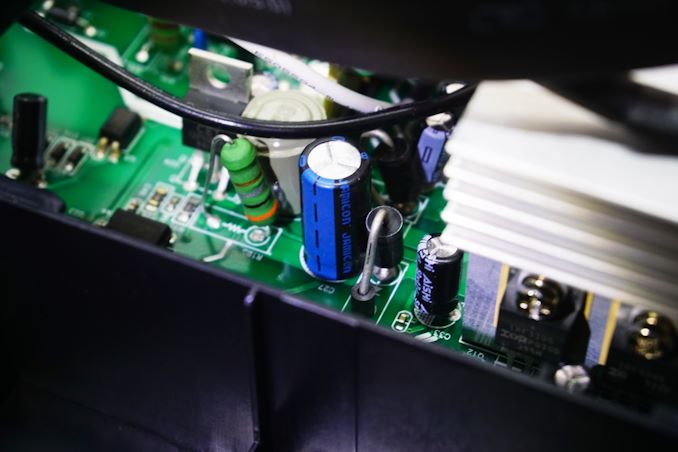
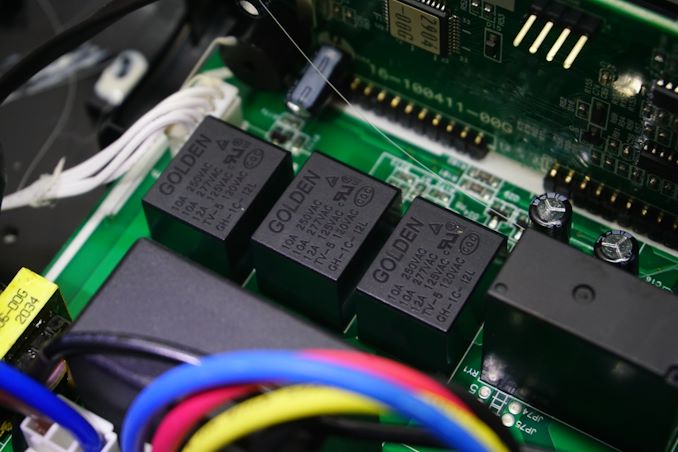








107 Comments
View All Comments
Oxford Guy - Friday, April 15, 2022 - link
‘The typical usage model is that the user saves their work, shuts down their PC, and then switches off the UPS. You're not necessarily supposed to run until the battery is 100% depleted.’This device can be depleted within minutes. How quickly is someone going to prevent the batteries from draining at all, let alone completely? People are not always at their PC. People take bathroom breaks, get snacks, et cetera.
Lead-acid tech is fundamentally incompatible with this usage model. It is that simple. The only usage model that is at all justifiable is having lead-acid batteries as an additional optional emergency capacity mode, to supplement a typically-adequate (capacity) lithium primary battery.
There is no justification for polluting the planet with batteries that are intentionally lifespan-shortened. The biosphere is in bad shape already, without being intentionally more reckless.
Even for those who don’t have a conscience and thus care not about ecological product justification, they need to grant that basic logic shows there is a severe mismatch between the workload and the solution chosen.
mode_13h - Friday, April 15, 2022 - link
> This device can be depleted within minutes.Runtime is determined by capacity / load. That it *can be* doesn't mean it *always is*. Even if you buy the minimum capacity needed for your load, that would be *peak* load. As we all know, modern computers can burn a lot of power at full load, but not much at idle. And, unless you're gaming or doing other heavy-duty computation, PCs are typically running closer to idle than peak.
> People are not always at their PC. People take bathroom breaks, get snacks, et cetera.
Yes. As I mentioned, my workplace typically gets about 5 years out of a battery, even though there's probably an average of 1 full discharge per year.
> Lead-acid tech is fundamentally incompatible with this usage model.
It's worked well enough for 3-4 decades. True, it's not ideal, but the batteries aren't a major cost item for the amount of time they last. I mean, relative to the cost of what's plugged into the UPS and its rate of depreciation.
> There is no justification for polluting the planet with batteries
And here's where I figured we'd end up. Like all things, it's a matter of cost/benefit. People should dispose of their batteries properly, but of course that process isn't perfect and not everyone is going to do it. So, I agree that lead acid is a dirty technology, but Lithium Ion also has environmental impacts. As and when better technologies become competitive, I'd like to get away from the tremendously heavy & dirty lead acid tech.
> basic logic shows there is a severe mismatch between the workload and the solution chosen.
No, it's not severe. You're overstating your case, which distracts from your core message.
Oxford Guy - Saturday, April 16, 2022 - link
‘You're overstating your case, which distracts from your core message.’That is your opinion.
bunkle - Tuesday, April 19, 2022 - link
Seems a lot of people think a UPS is equivalent to a power wall and don't really understand the designed use cases. They're for short term use so you can switch from one power source to another, prevent brownouts or enable automated clean shutdowns. I run a 3K VA UPS at hone that's attached to the mains and an LPG/Petrol generator. You'd be surprised how often brownouts occur, even last night it protected my machines:Date : 04/19/2022, Time : 02:36:12, Code : 0x0109
Warning - UPS: On battery power in response to distorted input.
Date : 04/19/2022, Time : 02:36:13, Code : 0x010A
Informational - UPS: No longer on battery power.
Given the fact that lead acid batteries are the top recycled consumer product in the US with 99% recycling rates, one could argue that lead acid is far cleaner than any Lithium based alternative. The batteries are also standardised and you don't get locked into using a vendor's specific replacements.
Oxford Guy - Thursday, April 21, 2022 - link
‘Seems a lot of people think a UPS is equivalent to a power wall and don't really understand the designed use cases.’That explains the use of lead batteries when people can need to do things like use a restroom or answer the door. Lead batteries are permanently degraded within minutes with these devices.
mode_13h - Friday, April 22, 2022 - link
> Lead batteries are permanently degraded within minutes with these devices.Your characterizations simply don't match my experiences. Your warnings sound very dire, but the 5-7 years I've gotten out of these batteries would argue otherwise.
I've long used AGM lead-acid batteries in my cars. I've even treated them somewhat roughly, especially during the pandemic, and yet still averaged about 5 years out of them.
If you want to keep pressing this case, then please provide some data on the specific battery tech used in these UPS units.
Oxford Guy - Thursday, May 12, 2022 - link
You don’t understand that lead acid batteries don’t work like lithium batteries. They are degraded when they are even partially discharged. The only workload they’re suitable for is one where the battery is only slightly discharged, like with starting a car.kpp - Thursday, April 14, 2022 - link
Very nice and technical review, as always from mr Fylladitakis. The only thing I believe is missing is a measure of the UPS power consumption while on standby with the batteries charged. In my experience, this consumption can range from 10W (very good "green" UPS) up to 50W (typical APC UPS). This consumption can contribute significantly to the Total Cost of Ownership of the UPS.mode_13h - Thursday, April 14, 2022 - link
> up to 50W (typical APC UPS).Not unless it's charging. Common sense should tell you that if it's burning 50 W, its fan must run to keep it from overheating. The only time mine runs is while charging or discharging. And I have a 1500 VA model, which is at the upper end of capacity for a desk-side UPS and even has a backlit front panel LCD. Also, it's a model with Sine Wave output.
APC publishes Load/Efficiency specs, on their website. For my SMC1500, they claim:
Load | Efficiency
--------------------
25% | 96.1%
50% | 97.6%
75% | 97.9%
100% | 98.0%
mode_13h - Thursday, April 14, 2022 - link
Translating that into Watts, I think it'd be:Load | Overhead
---------------------
225 W | 9 W
450 W | 11 W
675 W | 14 W
900 W | 18 W